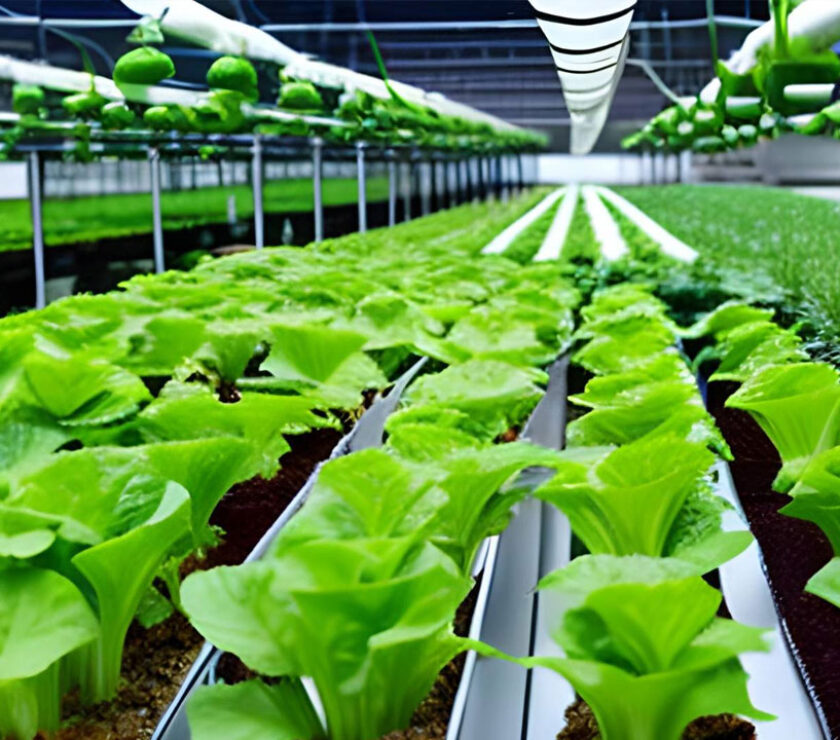Bontera SA
September 2023
Professor Farooq e Azam, R&D VP, Bontera BioAg – comments on the parallels and differences between plants and humans – and how these affect soil health, agriculture, and human well-being.
In Earth’s intricate web of life, humans and plants stand as two distinct pillars, each with unique metabolic, nutritional, and defence mechanisms. Understanding the parallels and divergences between these two kingdoms is not only a fascinating endeavour but also holds the potential to revolutionise our approaches to health, agriculture, and sustainability. In this piece, Professor Farooqe from Bontera, explores the worlds of metabolism, nutrient uptake, gut health, root microbiomes, adaptation to environmental stress, immune responses, and the profound impact of plant compounds on human health. By delving, we uncover the interconnectedness of life on Earth and the potential for cross-disciplinary insights that could shape our future.
Metabolism and Nutrient Uptake
Metabolism: A Tale of Two Worlds:
Metabolism, the very essence of life, takes dramatically different forms in humans and plants. Humans indulge in a complex culinary world, consuming ready-made, intricate foods, which they metabolise to support their bodily functions and generate waste. Yet, this waste is a treasure for other organisms in the ecosystem, reflecting the interconnectedness of life.
In stark contrast, plants craft their sustenance from humble ingredients like water, carbon dioxide, and minerals. Through the magic of photosynthesis, they harness solar energy, creating their own nourishment and fuelling the entire ecosystem. Their metabolism can be seen as a selfless act that sustains the world.
Nutrient Uptake: Roots vs. Digestive Systems:
The mechanisms of nutrient uptake in humans and plants further highlight their divergence. Humans primarily acquire nutrients in the form of complex carbohydrates, proteins, and fats from a variety of sources. These nutrients are processed through intricate metabolic pathways to fulfil their energy and structural requirements.
Plants, on the other hand, take a more frugal approach. They rely on a proficient root system to extract water and nutrients from the soil or other mediums. This acquired wealth is then utilised for both personal sustenance and the greater ecosystem’s benefit. Through their root exudates, plants channel a significant portion of their photosynthetically fixed carbon into the soil, nourishing the hidden world beneath our feet.
Gut Health and Root Microbiome
The Significance of a Healthy Gut Microbiome:
In the human realm, a healthy gut microbiome is a guardian of our well-being. This intricate community of microorganisms serves multifaceted functions, from metabolising toxins to supporting a robust intestinal lining. Disrupting this delicate balance can have adverse consequences, underscoring the importance of maintaining a diverse and thriving gut microbiome.
Plants, too, foster a microbial Eden in their root zone – the rhizosphere. This soil habitat teems with bacteria, fungi, and other microorganisms. Their collective efforts are responsible for nutrient mobilisation, the production of growth-regulating compounds, and even the suppression of pathogens. Through their rhizodeposition, plants nurture this bustling community, highlighting their influence on the belowground ecosystem.
Parallel Universes: Human and Plant Microbiomes:
While the human gut and plant root microbiomes share similarities in their dependence on microbial diversity, their functions and specific microorganisms differ vastly. Nonetheless, the parallel universes of microbiomes in humans and plants emphasise the universal importance of these intricate communities in maintaining health and vitality across the natural world.
Adaptation to Environmental Stress
Surviving the Elements: Humans and Plants:
Humans and plants must both weather the storm of environmental stressors, be it temperature fluctuations, drought, or pollution. These challenges trigger a range of responses, from stress protein synthesis to the activation of specific genes, all aimed at ensuring survival.
Plants, for example, synthesise stress proteins to maintain cellular membrane integrity in the face of adversity. They’ve honed their stress perception and response mechanisms over millennia, continually adapting to their environments. By understanding and harnessing these adaptations, we gain insights into improving crop resilience.
Interactions with Microorganisms
Microbial Influences on Health:
Both humans and plants are profoundly influenced by microorganisms, whether beneficial or harmful. In the human gut, these microscopic inhabitants play critical roles in metabolism, immunity, and even drug metabolism. Preserving a diverse and balanced gut microbiome is essential for our well-being.
Similarly, in the plant world, soil microorganisms are vital for nutrient cycling, disease suppression, and overall soil health. The complex interactions between plants and their microbial partners underscore the significance of a harmonious relationship between hosts and their microbiomes.
Mycorrhizal Marvels:
Mycorrhizal fungi, the “fungus roots” of plants, exemplify the power of symbiotic relationships. These fungi extend a plant’s reach for nutrients and facilitate phosphorous uptake, highlighting their indispensable role in plant health. While humans cannot directly benefit from mycorrhizae, harnessing this natural partnership could revolutionise sustainable agriculture, ensuring food security for the growing global population.
Immune Responses and Defence Mechanisms
Guardians of Health: Plants and Humans:
In the domain of defence mechanisms, plants and humans exhibit intriguing parallels. Both have physical barriers, such as the epidermis or human skin, as the first line of defence. Cellular responses, including programmed cell death, help contain infections and prevent pathogen spread in both kingdoms.
While humans possess a dedicated immune system, plants rely on innate induced immunity. They recognise microbial patterns, triggering basal and systemic defences. These mechanisms protect against threats and have potential applications in crop protection.
Learning from Nature:
While direct comparisons between plant and human defence mechanisms may be challenging, some shared biochemical responses, like producing phenolic compounds, highlight nature’s ingenuity. Exploring these parallels may inspire novel approaches to human disease prevention and treatment.
Nutritional and Medicinal Value
Phytochemicals: Nature’s Pharmacy
Phytochemicals, compounds produced by plants for defence and communication, play a pivotal role in human health. Herbal medicines have utilised these bioactive compounds for centuries, laying the foundation for modern pharmaceuticals.
The rise of nutraceuticals and probiotics further emphasises the profound influence of plant compounds on human well-being. These natural remedies offer a holistic approach to health, harnessing the power of plants to nourish and heal.
Crossroads of Healing – Plants and Humans:
Historically, humans and plants have shared medicinal compounds, like aspirin and salicylic acid. With applications in both kingdoms, these compounds exemplify the intricate interplay between humans and the plant world. Exploring these shared compounds could pave the way for innovative treatments and therapies.
Sustainable Agriculture and Human Health
Soil Health: The Foundation of Quality Food:
A thriving soil ecosystem is the bedrock of quality food production. Healthy soil translates into balanced and nutritious crops. Thus, the health of soil ecosystems directly impacts human nutrition and health.
Adopting sustainable agricultural practices, such as returning plant residues to the soil, green manuring, and crop rotation, can enhance soil health. A healthy soil begets a healthier populace in this symbiotic relationship between agriculture and health.
Ecosystem Health and Human Well-being
Biodiversity: Nature’s Steward
Biodiversity, the lifeblood of ecosystems, maintains balance and resilience. The intricate web of interactions between species ensures ecosystem stability and, by extension, human well-being.
The benefits of biodiversity ripple through ecosystems and directly impact human physical and mental health. A diverse and balanced environment fosters a diverse and balanced life.
Harmony with Nature: A Prescription for Well-being:
In the grand tapestry of life, humans and plants are threads interwoven into the very fabric of existence. By studying and respecting the principles of nature, we can unlock a world of insights into health, agriculture, and sustainability. From metabolism to microbiomes, from defence mechanisms to nutritional treasures, the commonalities and contrasts between humans and plants remind us of the shared journey of life on Earth. Together, we can nurture a healthier, more harmonious world for all.



